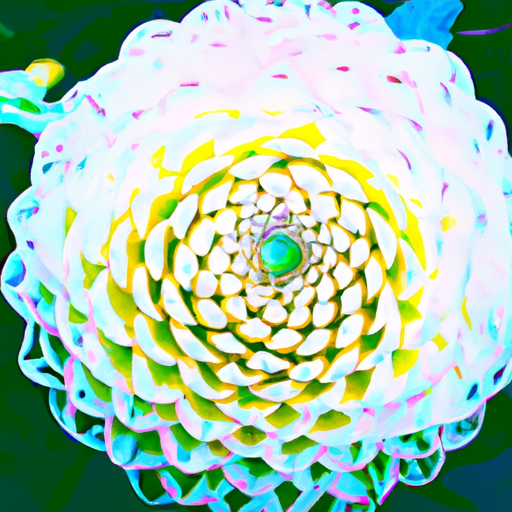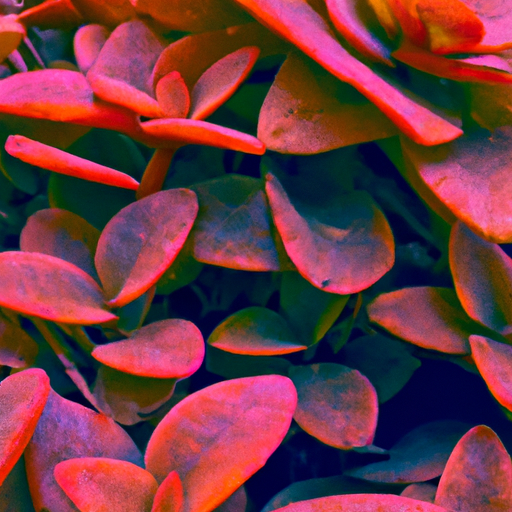
-
Table of Contents
- Botanical Art and its Influence on Graphic Design
- The Historical Significance of Botanical Art
- The Evolution of Botanical Art in Graphic Design
- Color Palette
- Composition and Layout
- Typography
- Case Studies: Botanical Art in Graphic Design
- 1. The New York Botanical Garden Logo
- 2. Packaging Design
- 3. Editorial Design
- The Impact of Botanical Art on Graphic Design
- 1. Nature-Inspired Designs
- 2. Attention to Detail
- 3. Bridging Art and Science
- Summary
Botanical Art and its Influence on Graphic Design

Botanical art has a rich history that dates back centuries. It has not only served as a means of documenting plant species but has also influenced various art forms, including graphic design. This article explores the connection between botanical art and graphic design, highlighting the impact it has had on the field.
The Historical Significance of Botanical Art
Botanical art emerged as a way to document and study plant species. During the Renaissance period, botanical illustrations were used to identify medicinal plants and aid in the development of herbal remedies. Artists like Leonardo da Vinci and Albrecht Dürer created detailed botanical drawings that showcased their keen observation skills and scientific understanding.
As exploration and trade expanded in the 17th and 18th centuries, botanical art became a means of cataloging newly discovered plant species. Botanical expeditions led to the creation of comprehensive botanical illustrations, such as those found in Carl Linnaeus’ “Species Plantarum.” These illustrations not only served as scientific records but also captivated the public with their beauty and precision.
The Evolution of Botanical Art in Graphic Design
With the advent of printing technology, botanical illustrations began to influence graphic design. The intricate details and vibrant colors found in botanical art inspired designers to incorporate similar elements into their work. The following are some key ways in which botanical art has influenced graphic design:
Color Palette
Botanical art often features a wide range of colors, from delicate pastels to bold and vibrant hues. Graphic designers have drawn inspiration from these color palettes, using them to create visually appealing designs. By incorporating natural colors found in botanical illustrations, designers can evoke a sense of harmony and beauty in their work.
Composition and Layout
The composition and layout of botanical art have also influenced graphic design. Botanical illustrations often feature a central focus, with surrounding elements arranged in a balanced and aesthetically pleasing manner. This approach to composition has been adopted by graphic designers, who use it to create visually striking designs that draw the viewer’s attention to the main subject.
Typography
Typography in botanical art is often elegant and intricate, reflecting the delicate nature of the subject matter. Graphic designers have incorporated similar typography styles into their work, using ornate and decorative fonts to add a touch of sophistication to their designs. This blending of botanical art and typography creates visually captivating compositions.
Case Studies: Botanical Art in Graphic Design
Several notable examples demonstrate the influence of botanical art on graphic design. These case studies highlight how botanical elements have been incorporated into various design projects:
1. The New York Botanical Garden Logo
The logo of the New York Botanical Garden is a prime example of botanical art’s influence on graphic design. The logo features a stylized illustration of a plant, with intricate details and vibrant colors. This design not only represents the botanical theme of the garden but also captures the beauty and elegance associated with botanical art.
2. Packaging Design
Many product packaging designs incorporate botanical elements to create an appealing aesthetic. For example, a skincare brand may use botanical illustrations of plants and flowers on their packaging to convey a sense of natural ingredients and beauty. These designs draw inspiration from botanical art to create visually appealing and informative packaging.
3. Editorial Design
Botanical art has also influenced editorial design, particularly in magazines and books. The use of botanical illustrations as chapter dividers or background elements adds a touch of elegance and sophistication to the overall design. By incorporating botanical art, designers can create visually engaging layouts that enhance the reading experience.
The Impact of Botanical Art on Graphic Design
The influence of botanical art on graphic design extends beyond aesthetics. It has also shaped the way designers approach their work and the messages they convey. The following are some key impacts of botanical art on graphic design:
1. Nature-Inspired Designs
Botanical art has encouraged designers to incorporate nature-inspired elements into their work. By using botanical illustrations, designers can evoke a sense of tranquility, freshness, and connection to the natural world. This approach has become particularly popular in industries such as wellness, organic products, and environmental conservation.
2. Attention to Detail
Botanical art is known for its meticulous attention to detail. This influence has led graphic designers to pay closer attention to the finer elements of their designs, ensuring that every aspect is carefully crafted. By incorporating the precision and intricacy of botanical art, designers can create visually stunning and impactful designs.
3. Bridging Art and Science
Botanical art has always been a bridge between art and science. It combines the aesthetic beauty of art with the scientific accuracy of plant identification. This influence has encouraged graphic designers to explore the intersection of art and science in their work, creating designs that are both visually appealing and informative.
Summary
Botanical art has had a profound influence on graphic design. From its historical significance as a means of documenting plant species to its impact on color palettes, composition, and typography, botanical art has shaped the field of graphic design in numerous ways. Through case studies and examples, we have seen how botanical elements have been incorporated into various design projects, from logos to packaging and editorial design. The influence of botanical art extends beyond aesthetics, impacting the way designers approach their work and the messages they convey. By drawing inspiration from botanical art, graphic designers can create visually captivating and meaningful designs that resonate with their audience.
